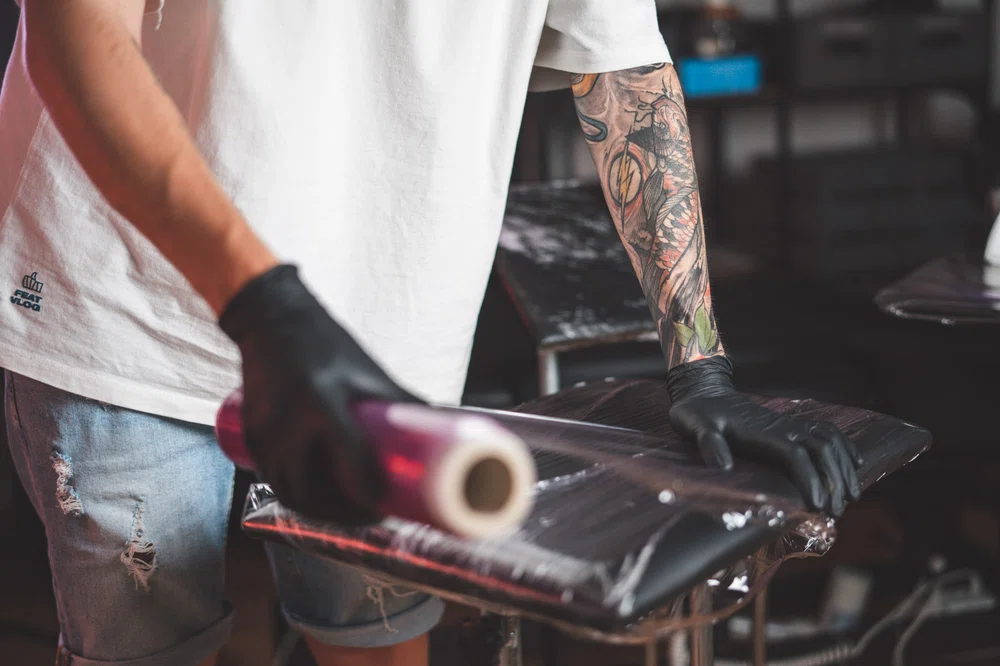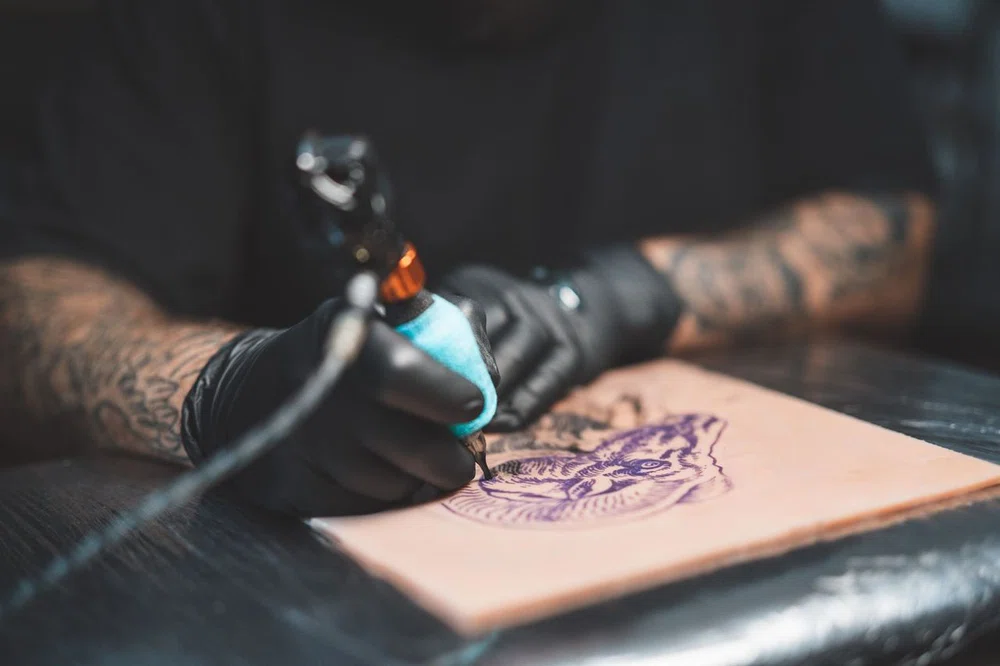Tips for making your first tattoo
Everything you need to know to tattoo for the first time
24 May 2024
You may have practised a lot over different surfaces, and now the time has come: you’re about to tattoo over real skin. What to do?
Doubts are flowing, nerves, anxiety, and insecurity are coming, and you don’t know from where to begin, so you feel the pressure, end up blank and lose it!
Hold on a minute and take it easy. It’s OK, we’ve all been there. That’s why we have it covered for you with a couple of advices to make your first tattooing experience more pleasant while avoid dying trying. So, cheer up!
Preparing the working area correctly
Making your first mistakes as an artist is quite common… actually, it’s necessary to happen, but keep in mind that your canvas is a body and not an object.
Hygiene is essential when it comes to tattooing, as it’s about wounding the skin, which is not a small deal.
That’s why you need to keep everything organized and stay neat while working, as disinfection is crucial.
- Clean well every surface with disinfectant. Use alcohol, water and soap to clean all the surfaces in which you’re about to work.
Then, remember to remove all the chemical surpluses left on the way because even tough they’re clean, they can still cause an infection or an allergic reaction when misplaced or in contact with needles. Be extra-careful with this.
- Use cling film. Plastic wrap is important as you’ll need it for protecting both the environment where you put your equipment, and the tattoo once done.

- Keep your hands clean and use gloves. Hands are one of the main germ & bacteria carriers, for what you’ll have to make sure they keep aseptic. The gloves you use have to be disposable, sterilized and made with nitrile, which are thicker than the regular ones. Once you finish working, throw them away.
- Be tidy. Seek for a table that has enough space to keep distance in between the materials. Try not no stack them altogether, it’s important to avoid ink spillings or another sorts of accidents that may occur while you’re tattooing.
- Set up the right lighting. This aspect is fundamental, so we can’t ignore it, as obvious as it may seem. It’s not the same to work with a poor lightning condition than doing it in a bright environment and working with white lights, as they will help you get a clearer sight of details.
These are merely a few general advices. If you want to learn more about it, go to our blog post on Unregulated tattoos: you get what you pay for, there we go deeper into the topic and warn you about possible diseases when you don’t follow the sanitary standards.
Some common mistakes
As we said earlier, it’s normal and useful to fail on getting the results you wanted. At first, things will not be as you imagined. Just be patient, you can achieve anything with practice. But, to do so, you have to start!, so don’t hesitate on taking the first step.
Here you have some of the most classic errors. Read them carefully and if you find that you’ve already made one of those, be glad, be good to yourself, learn from it and avoid stagnation.
- Working anywhere. As told before, it’s crucial to set up your working area in a specific place where everything is clean, including the room. Hygiene is the main goal, while having the right lightning set up, and making it comfortable for both you and your client is essential, as having a good time is also important.
- Hurrying. This is the typical mistake that everyone makes, wanting to go faster to end quicker, having the wrong idea that this means being better and giving the best impression. But this is far from reality, finishing earlier not always ends up well.
- Practising over low quality synthetic skin. OK, you’ve practised tons before moving on to the real skin, but have you noticed its quality? A poor equipment could hinder your working process, thus, your learning.
If you want to learn more about this, visit this post, where we tell you everything you need to know about Synthetic Skin.

- Calibrating the machine wrong. Each scenario needs different intensities. This is something you’ll learn over practice, so don’t jump into things before knowing how to do them. Always ask first.
If you’re not too sure about how to do it, you can start by using rotary machines, to avoid the most of the calibrations. Want to learn more about this?, here you have a post on Tattooing Machine Types.
- Starting with a complex design. Pretending to make a big design, filled with lines, shadows, and complicated details will only stress you more. Begin with small designs, go for the simple first.
- Retracing lines more than once. Going through a line again and again because you couldn’t get it right in the first try will only result in a thick, blurred line.
- Exceeding on the use of Vaseline. Putting product over the surface while you’re still tattooing is also wrong.
Advices
To avoid future problems, we’ve gathered a few useful advices for you. Remember that you’re not alone, we’ve all being through this :)
- Don’t keep your inexperience to yourself. Warning about your lack of experience is not a bad thing, it’s actually good because it means you’re being honest with your client and letting him know you’ll do your best. Our advice? Don’t be afraid to tell them!, as it’s not something to be scared of.
- Take your time. As said earlier, wanting to make everything on a hurry is not the right path, as you’ll end up with more work and pressure.
- Begin with minor and easier designs. You could start by making flash tattoos instead of complicated pieces. It will let you practice with fewer issues. These are the right ones for you!
- Keep calm and tattoo on! Nerves and anxiety are difficult to avoid, but don’t let them overcome you, relax, keep concentrated and focus on what really matters. Have a good rest the day before and try not to overextend yourself.
- Disinfect the equipment and working area. Asepsis and hygiene should be on top of your priority list.
- Make the transfer correctly. Not paying attention to the transfer is a common error, but it’s wrong in so many levels… as it’s actually your working guide, and an 80% of the tattoo comes from it. You could make some free hand lines, but it’s not what we recommend when you begin.
- Stretch the skin enough. Time will teach you how to do it best, but for now, we suggest you that you stretch the skin with your free hand, so the needle pricks evenly, and the ink enters at the correct depth. If you don’t do this, ink could go in well only in a few parts, but end up fading over time.
- Keep your work neat. We’ve already given you the heads-up, but it’s important that you consolidate it, tidiness and order must be impeccable.
We hope it has helped you learn something new.
Are you just starting your tattooing journey and feeling overwhelmed by fears and doubts? There's nothing better than learning from the experience of someone who has been there too!
Discover tricks that you can apply starting today with our online professional tattooing courses.